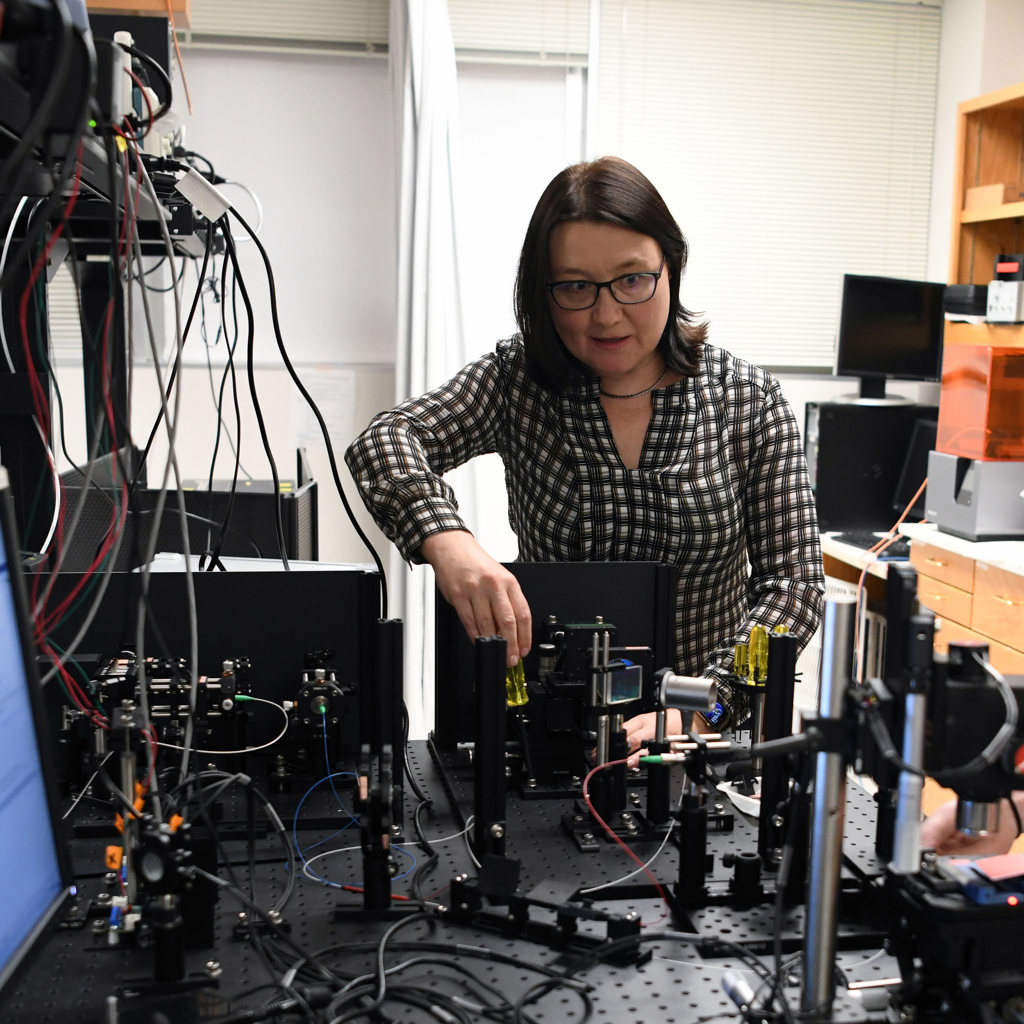Irina Larina
Baylor College of Medicine, USAFor the development of novel imaging instruments for biomedical applications across multiple scales, and for service to the community.

Although Irina Larina was always interested in physics and math, she did not expect to become a scientist. In her studies, she would read textbooks and admire how complicated and elegant science was but never believed she could do it herself. Irina remembers thinking that one would need to be gifted and exceptionally experienced to become a “real” scientist. However, it turns out that she was doing the work and gaining the background experience all along. As a student, Irina always pursued her interests and did what she believed to be the logical next step. She has proven that a career in science is possible even without a defined plan. Her advice to many people is that you don’t have to know the future: “keep going while doing what you enjoy, and you can always change your mind later.”
Irina’s career is also an example of how your interests can change. At one point, she had to find a research group in a particular city: Galveston, Texas, USA. She found a position at the University of Texas Medical Branch, and this pushed her to make a dramatic shift from physics to biological research. Previously, she completed degrees in physics at Saratov State University, Russia, where her least favorite subjects were English and Biology. Ironically, biology was central to her PhD research. She felt totally uncomfortable at first, but as she started to understand the complexity and apply what she knew from physics, she gained a profound appreciation for the area. From this significant shift, she learned the importance of cross-disciplinary research and now thrives at the intersection of optics and biology.
Today, her lab develops optical tools for imaging developmental and reproductive processes. Her group contributes to two main applications: cardio dynamics and cardiac birth defects, and reproduction and fertility. Using animal models, her team uses optical coherence tomography, fluorescence microscopy imaging, and optogenetics methods to explore processes never seen before. This is particularly exciting for the reproductive side of her work. She and her team have been able to establish methods that track eggs and individual sperm through the fallopian tubes, and within the next year or so, they hope to be able to image in vivo the moment of fertilization. She and her team are the first people to see these events. Through her cross-disciplinary work, she can provide a unique perspective to enable discoveries and new information for the field.
Irina credits much of her success to her wonderful mentors, Valery Tuchin and Mary Dickinson. Tuchin, an Optica Fellow and recipient of the 2019 Michael S. Feld Biophotonics Award, was Irina’s undergraduate optics professor. The two have remained in touch and sometimes collaborate on their research. She says that he has been a tremendous influence on her career path. Dickinson was Irina’s postdoctoral mentor at Baylor College of Medicine, USA. Dickinson showed Irina the power of being an interdisciplinary scientist and that it is possible to have a successful career while maintaining a thriving personal life. Irina made a smooth transition out of the Dickinson group and now practices many of the mentoring ideals she learned there.
Irina truly enjoys her job. She loves that she gets to work at the intersection of different fields, where she can make unique contributions. Her group includes students with an array of different backgrounds, and they, at times, feel a certain level of discomfort, just like she did when she was just starting. Over the years, Irina has faced many challenges, and it is in embracing those challenges that she finds great fulfillment.
Photo Credit: Baylor College of Medicine
Profile written by Samantha Hornback
